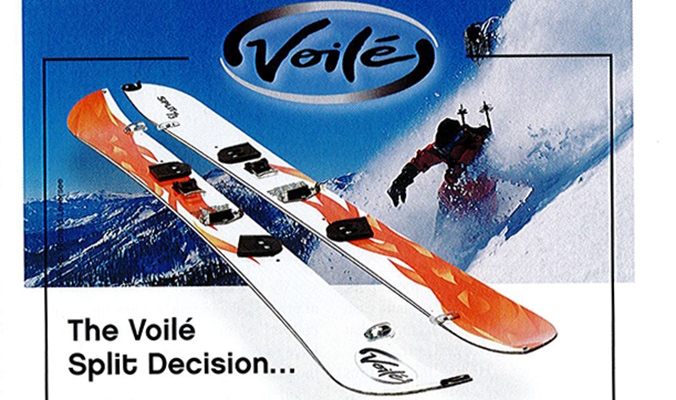In 2001 Backcountry ran its first-ever review of splitboards with the apt cover line, “Backcountry Boarding: Dealing with the Uphill.” The review included the Burton Split and the Voilé Split Decision, but despite the exciting new technology, tester Jenny Ader cautioned consumers. “When you buy your first splitboard, try not to feel too defeated by the set-up process,” she wrote.
With relatively simplistic technology, Voilé’s system proved to be “light and versatile,” Ader said, and iterations of the 13-year-old interface can still be found on the market today. The same can not be said for Burton’s “Mercedes of splitboards,” as Ader called it.
That year, Burton developed three splitboard options geared towards the backcountry devotee, along with a set of their own non split-specific bindings. The interface, which Ader described as having “beautiful cast aluminum parts gleaming in all the right places,” looks like nothing on the market today. And for good reason. Associate Publisher Paul Davis, who happened upon a Burton Split in 2002, remembers the binding system less than fondly. “I had a pair of those. They sucked,” he quipped. “Too many moving parts.” He remains skeptical to this day. “I never fully trust it all. Snowboarders are simple folk—all that moving shit makes us nervous,” Davis says.
Thankfully, split technology has dramatically advanced in the last few years. Take a look at this year’s Editors’ Choice Award winners for the latest in splitboard tech.
We’re working toward publishing our 100th issue and celebrating 20 years of Backcountry Magazine. Can you believe it? Well, since we all can’t put our beers together with celebratory cheer, we’ve unearthed early editions of the mag, dug through them and pulled stories, photos, quotes, gear relics and more for your enjoyment. —The Editors












Related posts:
Throwback Thursday: The "Equipment" Really Counts
Cover Story: Big Air
Ahead of the Curve: Two Decades of Backcountry Skiing Innovation
Throwback Thursday: No Training Heels